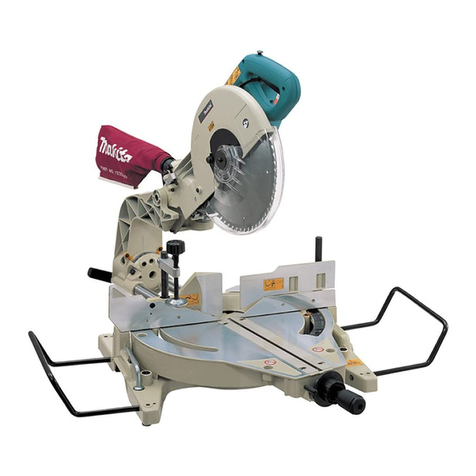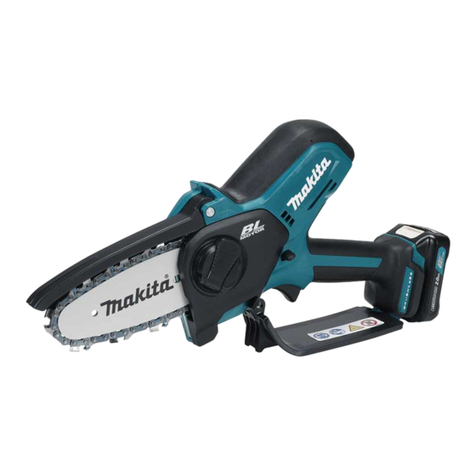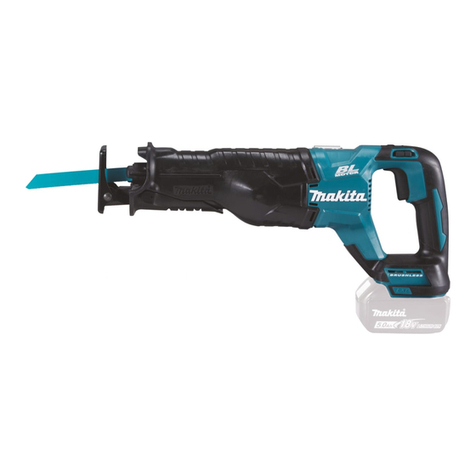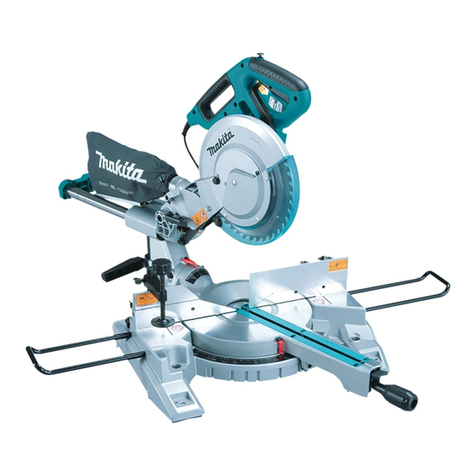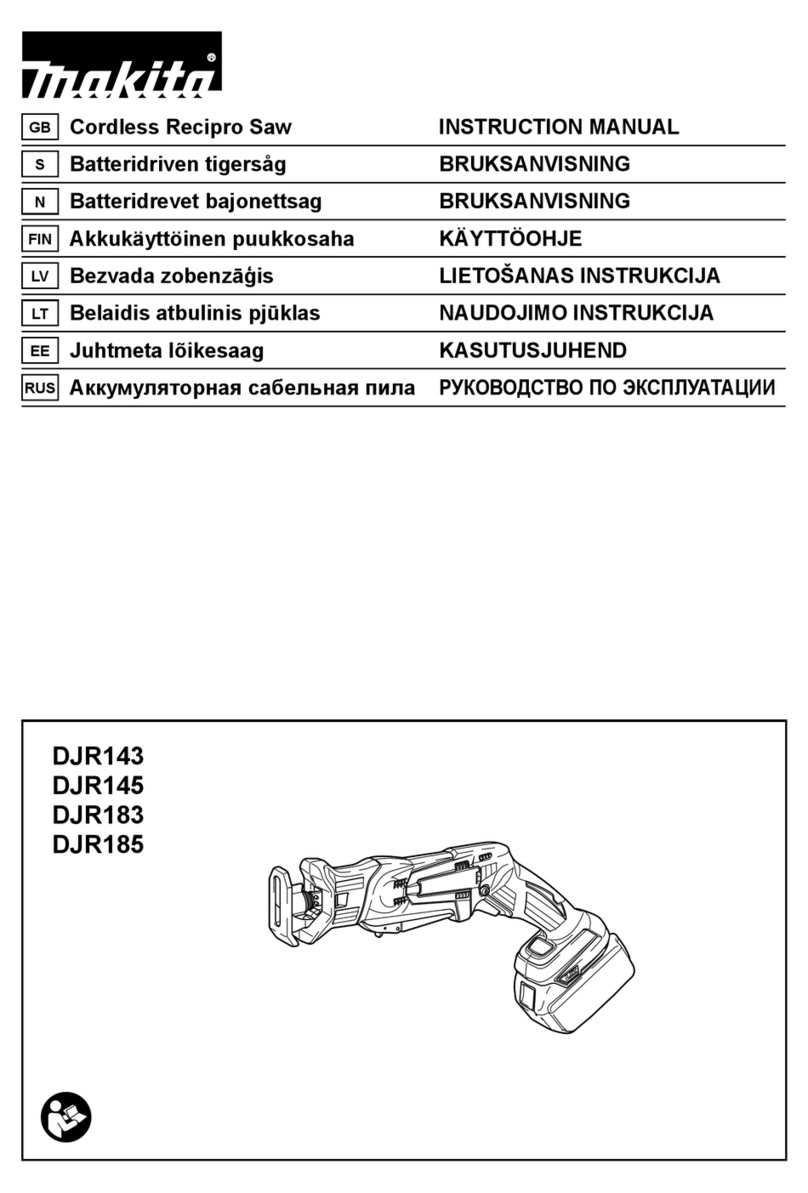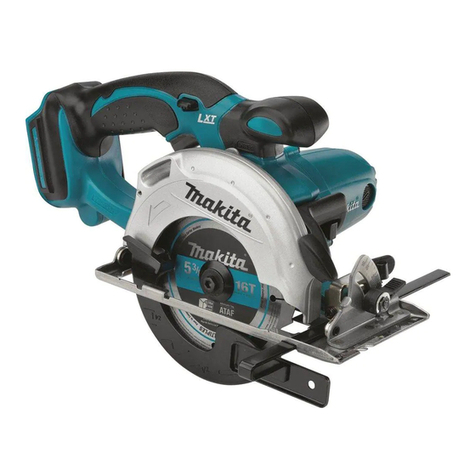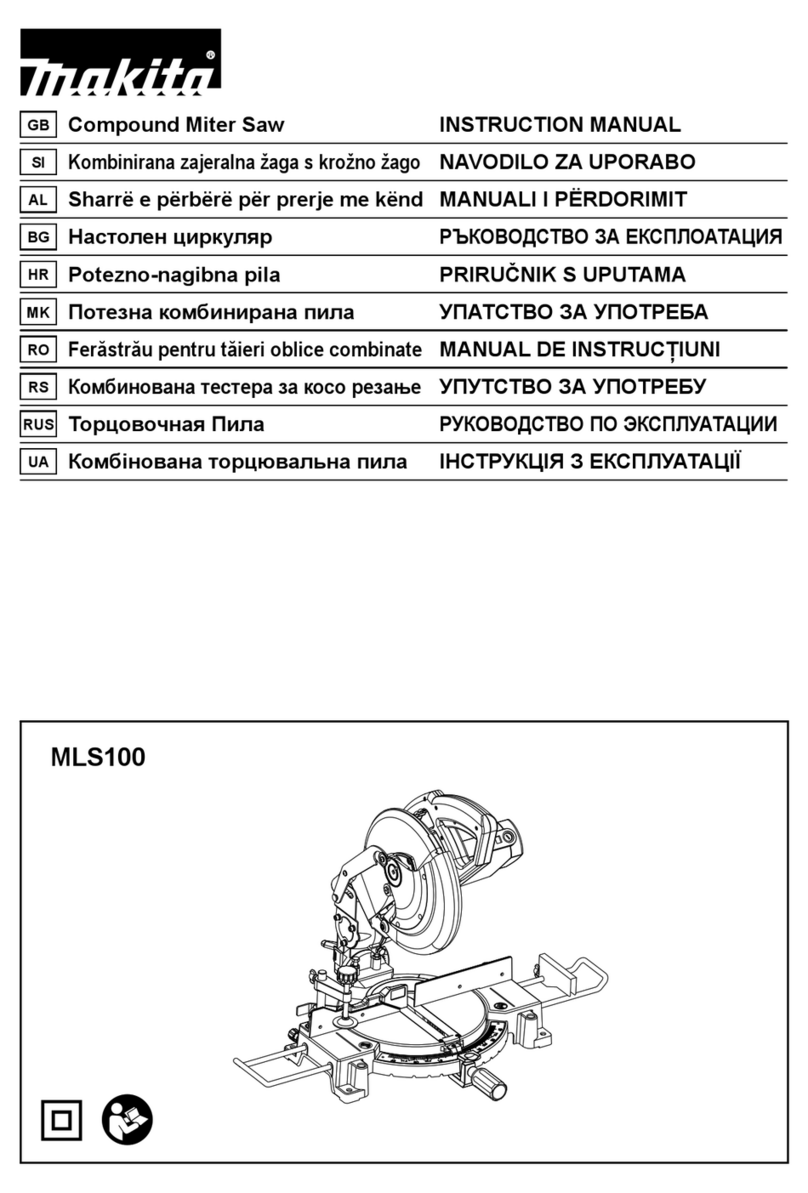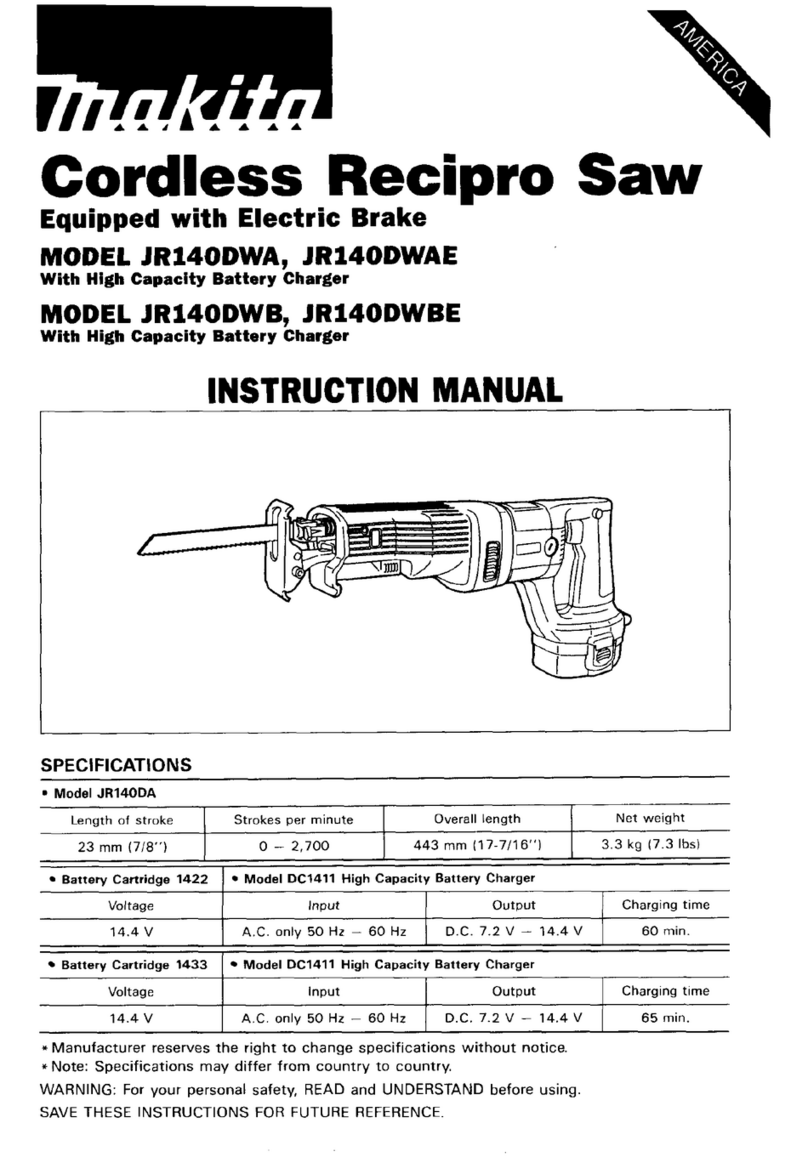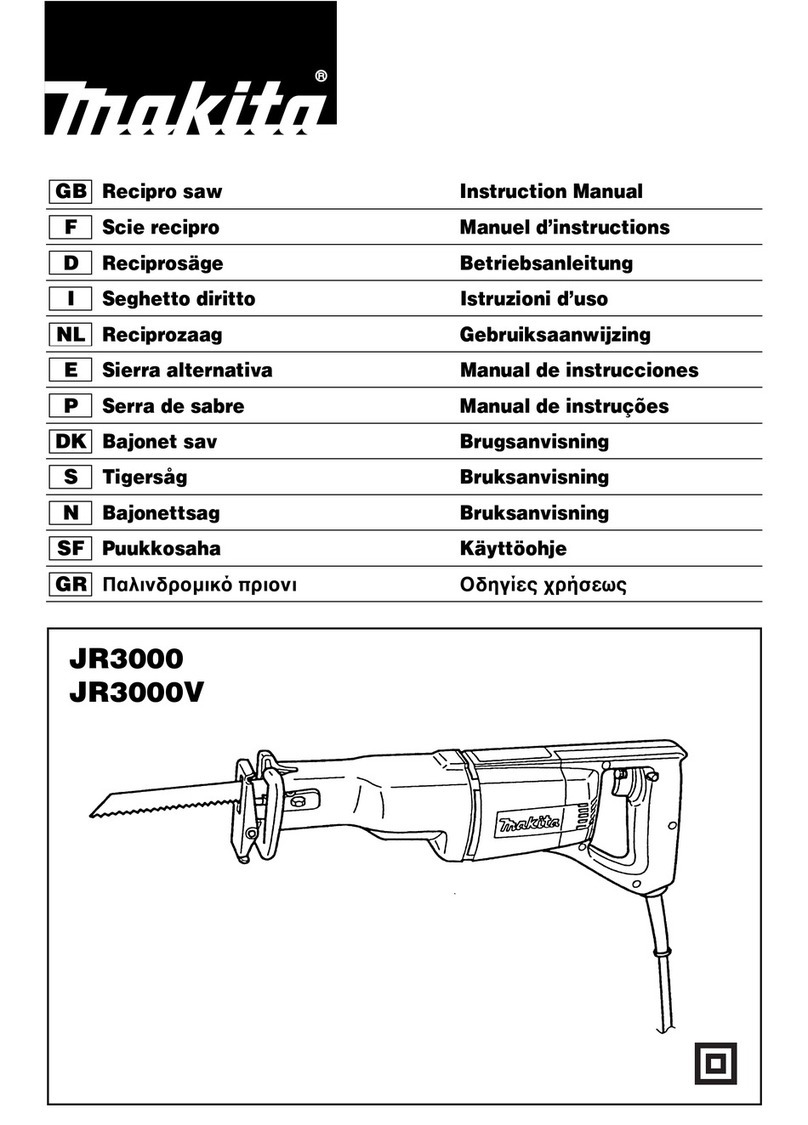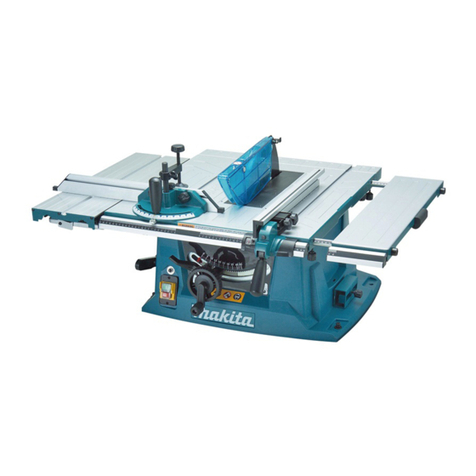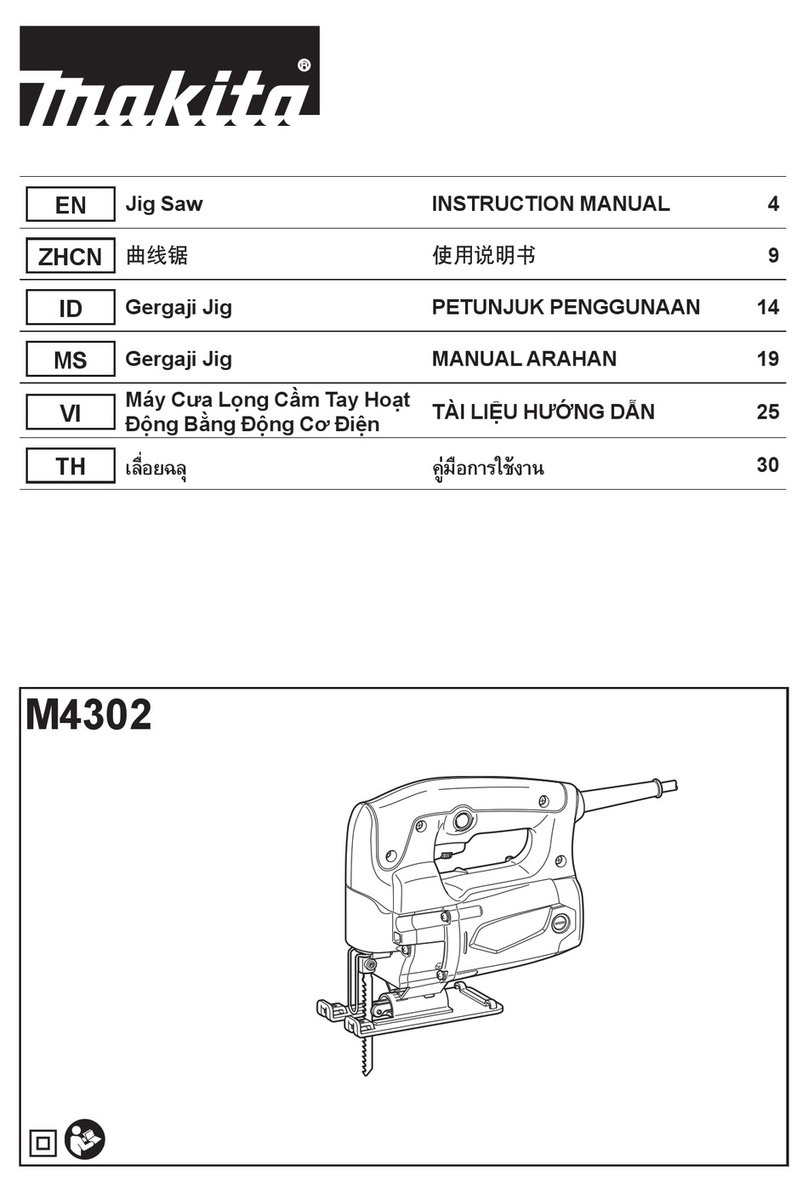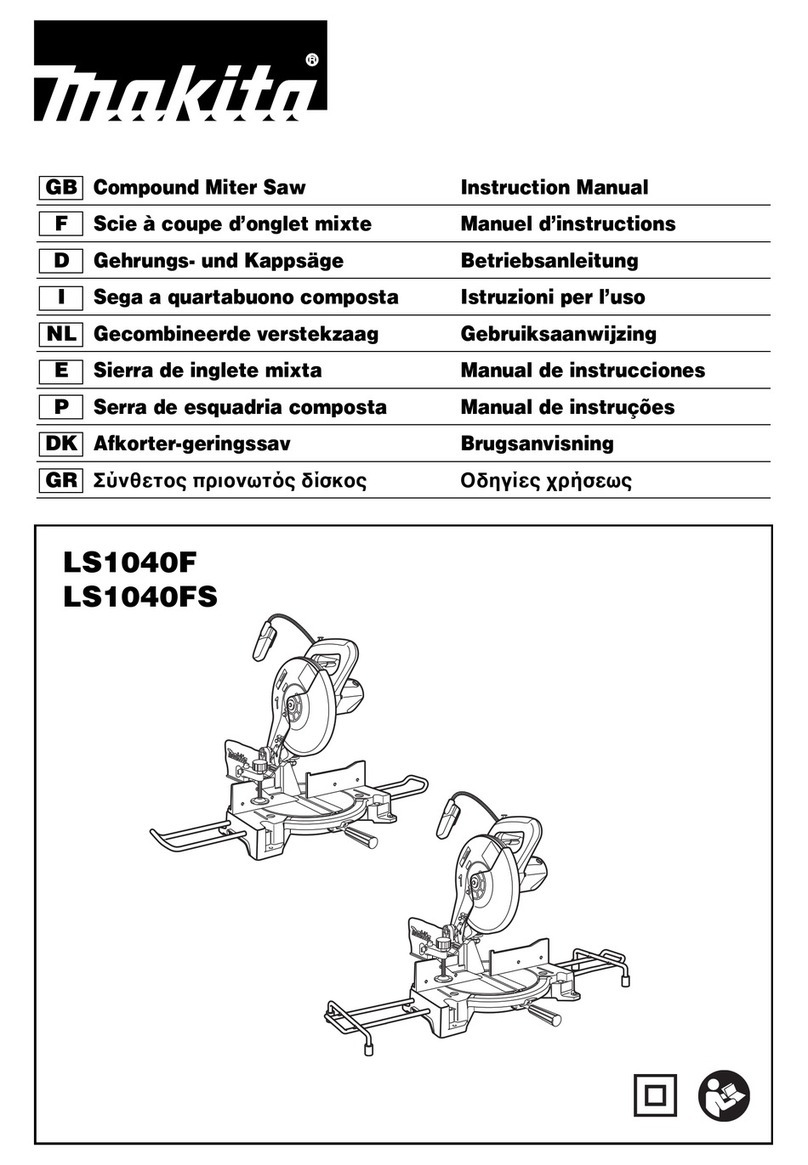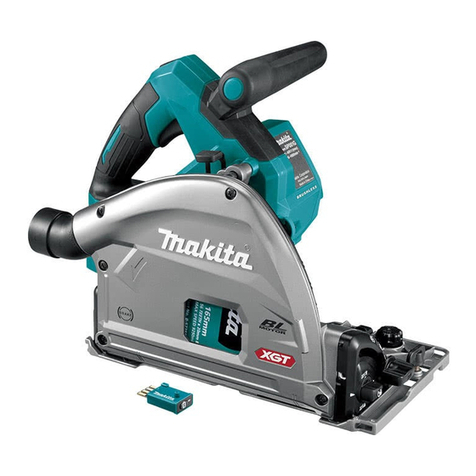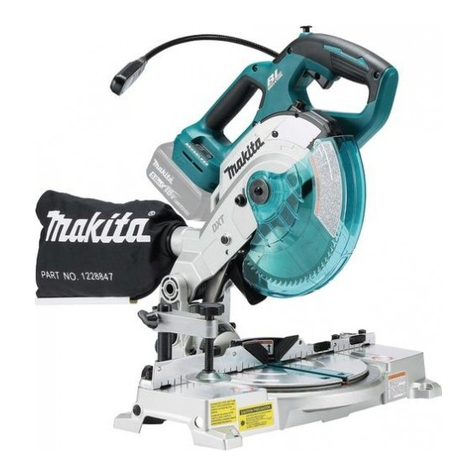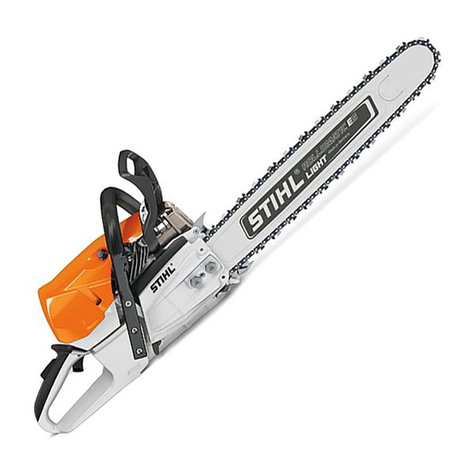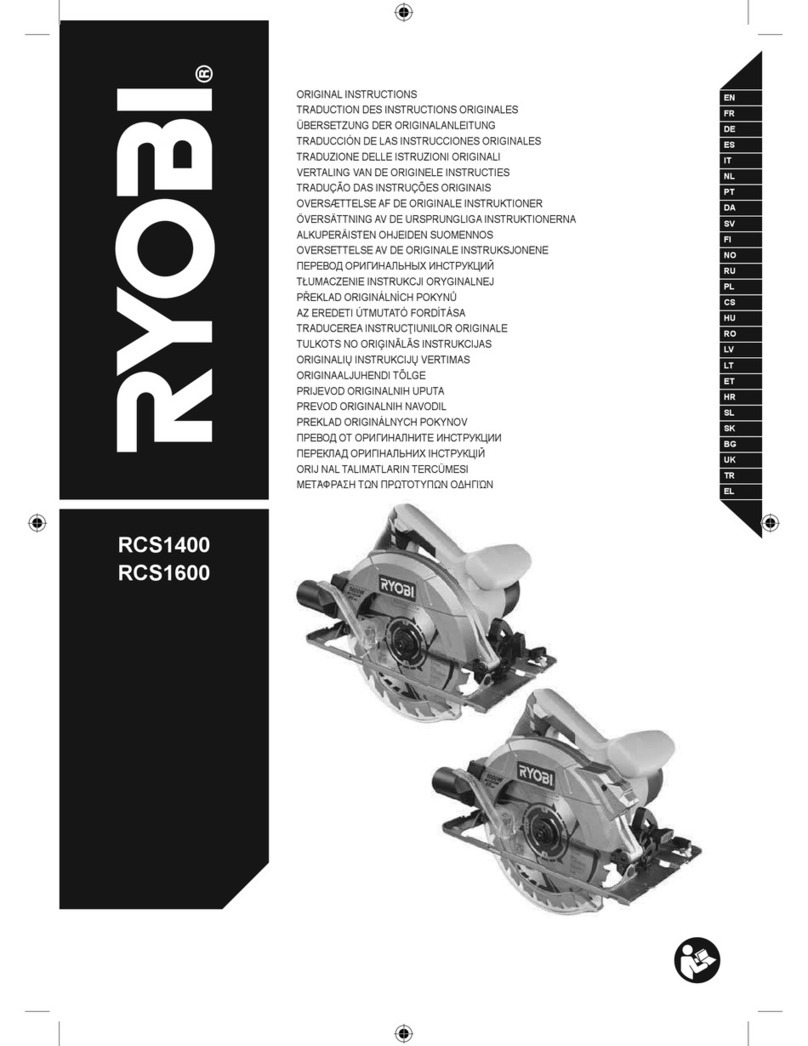
7ENGLISH
WARNING:
The vibration emission during actual
use of the power tool can dier from the declared val-
ue(s) depending on the ways in which the tool is used
especially what kind of workpiece is processed.
WARNING:
Be sure to identify safety measures
to protect the operator that are based on an estima-
tion of exposure in the actual conditions of use (tak-
ing account of all parts of the operating cycle such
as the times when the tool is switched o and when
it is running idle in addition to the trigger time).
EC Declaration of Conformity
For European countries only
TheECdeclarationofconformityisincludedasAnnexA
to this instruction manual.
SAFETY WARNINGS
General power tool safety warnings
WARNING: Read all safety warnings, instruc-
tions, illustrations and specications provided
with this power tool. Failure to follow all instructions
listedbelowmayresultinelectricshock,reand/or
seriousinjury.
Save all warnings and instruc-
tions for future reference.
Theterm"powertool"inthewarningsreferstoyour
mains-operated(corded)powertoolorbattery-operated
(cordless)powertool.
Cordless circular saw safety warnings
Cutting procedures
1.
DANGER: Keep hands away from cutting area
and the blade. Keep your second hand on auxil-
iary handle, or motor housing. If both hands are
holdingthesaw,theycannotbecutbytheblade.
2.
Do not reach underneath the workpiece. The guard
cannotprotectyoufromthebladebelowtheworkpiece.
3. Adjust the cutting depth to the thickness of
the workpiece. Less than a full tooth of the blade
teeth should be visible below the workpiece.
4. Never hold the workpiece in your hands or
across your leg while cutting. Secure the
workpiece to a stable platform. It is important to
supporttheworkproperlytominimisebodyexpo-
sure, blade binding, or loss of control.
►Fig.1
5.
Hold the power tool by insulated gripping surfaces,
when performing an operation where the cutting
tool may contact hidden wiring. Contact with a “live”
wire will also make exposed metal parts of the power
tool “live” and could give the operator an electric shock.
6. When ripping, always use a rip fence or
straight edge guide.Thisimprovestheaccuracy
of cut and reduces the chance of blade binding.
7.
Always use blades with correct size and shape
(diamond versus round) of arbour holes. Blades
that do not match the mounting hardware of the
sawwillruno-centre,causinglossofcontrol.
8. Never use damaged or incorrect blade wash-
ers or bolt. The blade washers and bolt were
speciallydesignedforyoursaw,foroptimum
performanceandsafetyofoperation.
Kickback causes and related warnings
—
kickbackisasuddenreactiontoapinched,jammedor
misaligned saw blade, causing an uncontrolled saw to
lift up and out of the workpiece toward the operator;
—
whenthebladeispinchedorjammedtightlybythe
kerf closing down, the blade stalls and the motor reac-
tiondrivestheunitrapidlybacktowardtheoperator;
—
if the blade becomes twisted or misaligned in the cut,
the teeth at the back edge of the blade can dig into
the top surface of the wood causing the blade to climb
outofthekerfandjumpbacktowardtheoperator.
Kickbackistheresultofsawmisuseand/orincorrect
operating procedures or conditions and can be avoided
bytakingproperprecautionsasgivenbelow.
1.
Maintain a rm grip with both hands on the saw and
position your arms to resist kickback forces. Position
your body to either side of the blade, but not in line
with the blade.Kickbackcouldcausethesawtojump
backwards,butkickbackforcescanbecontrolledbythe
operator, if proper precautions are taken.
2.
When blade is binding, or when interrupting a
cut for any reason, release the trigger and hold
the saw motionless in the material until the
blade comes to a complete stop. Never attempt
to remove the saw from the work or pull the
saw backward while the blade is in motion or
kickback may occur. Investigate and take correc-
tive actions to eliminate the cause of blade binding.
3.
When restarting a saw in the workpiece, centre the saw
blade in the kerf so that the saw teeth are not engaged
into the material.Ifasawbladebinds,itmaywalkupor
kickback from the workpiece as the saw is restarted.
4. Support large panels to minimise the risk of
blade pinching and kickback. Large panels tend
to sag under their own weight. Supports must be
placed under the panel on both sides, near the line
of cut and near the edge of the panel.
►Fig.2
►Fig.3
5.
Do not use dull or damaged blades. Unsharpened
orimproperlysetbladesproducenarrowkerfcaus-
ing excessive friction, blade binding and kickback.
6. Blade depth and bevel adjusting locking levers
must be tight and secure before making the
cut.Ifbladeadjustmentshiftswhilecutting,itmay
cause binding and kickback.
7. Use extra caution when sawing into existing
walls or other blind areas. The protruding blade
maycutobjectsthatcancausekickback.
8. ALWAYS hold the tool rmly with both hands.
NEVER place your hand, leg or any part of your
body under the tool base or behind the saw,
especially when making cross-cuts. If kickback
occurs,thesawcouldeasilyjumpbackwardsover
yourhand,leadingtoseriouspersonalinjury.
►Fig.4


